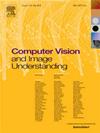PDCNet: A lightweight and efficient robotic grasp detection framework via Partial Convolution and knowledge distillation
IF 3.5
3区 计算机科学
Q2 COMPUTER SCIENCE, ARTIFICIAL INTELLIGENCE
引用次数: 0
Abstract
Improving detection accuracy complicates robotic grasp models, which makes deploying them on resource-constrained edge AI devices more challenging. Although various lightweight strategies have been proposed, directly designing compact networks may not be optimal, as balancing accuracy and model size is challenging. This paper proposes a lightweight grasp detection framework, PDCNet. In response to this problem, we optimize the interplay between computational demands and detection performance. The method integrates Partial Convolution (PConv) for efficient feature extraction, Discrete Wavelet Transform (DWT) for enhancing frequency-domain feature representation, and a Cross-Stage Fusion (CSF) strategy for optimizing the utilization of multi-scale features. A Quality-Enhanced Huber Loss Function (Q-Huber) is also introduced to improve the network’s sensitivity to vital grasp localities. Finally, the teacher–student framework distills expertise into a compact student model. Comprehensive evaluations were conducted using the public datasets to demonstrate that PDCNet achieves detection accuracies of 98.7%, 95.8%, and 97.1% on Cornell, Jacquard and Jacquard_V2 datasets respectively, while maintaining minimal parameters and high computational efficiency. Real-world experiments on an embedded edge AI device further validate the capability of PDCNet to perform accurate grasp detection under limited computational resources.
PDCNet:一个基于部分卷积和知识蒸馏的轻量级、高效的机器人抓取检测框架
提高检测精度使机器人抓取模型复杂化,这使得在资源受限的边缘人工智能设备上部署它们更具挑战性。尽管已经提出了各种轻量级策略,但直接设计紧凑网络可能不是最优的,因为平衡精度和模型大小是具有挑战性的。本文提出了一种轻量级抓取检测框架PDCNet。为了解决这个问题,我们优化了计算需求和检测性能之间的相互作用。该方法集成了用于有效特征提取的部分卷积(PConv)、用于增强频域特征表示的离散小波变换(DWT)和用于优化多尺度特征利用的跨阶段融合(CSF)策略。引入了一种质量增强的Huber损失函数(Q-Huber)来提高网络对关键抓取点的灵敏度。最后,师生框架将专业知识提炼成一个紧凑的学生模型。利用公开数据集进行综合评价,PDCNet在Cornell、Jacquard和Jacquard_V2数据集上分别达到了98.7%、95.8%和97.1%的检测准确率,同时保持了最小的参数和较高的计算效率。在嵌入式边缘AI设备上的实际实验进一步验证了PDCNet在有限计算资源下进行准确抓取检测的能力。
本文章由计算机程序翻译,如有差异,请以英文原文为准。
求助全文
约1分钟内获得全文
求助全文
来源期刊

Computer Vision and Image Understanding
工程技术-工程:电子与电气
CiteScore
7.80
自引率
4.40%
发文量
112
审稿时长
79 days
期刊介绍:
The central focus of this journal is the computer analysis of pictorial information. Computer Vision and Image Understanding publishes papers covering all aspects of image analysis from the low-level, iconic processes of early vision to the high-level, symbolic processes of recognition and interpretation. A wide range of topics in the image understanding area is covered, including papers offering insights that differ from predominant views.
Research Areas Include:
• Theory
• Early vision
• Data structures and representations
• Shape
• Range
• Motion
• Matching and recognition
• Architecture and languages
• Vision systems
 求助内容:
求助内容: 应助结果提醒方式:
应助结果提醒方式:


